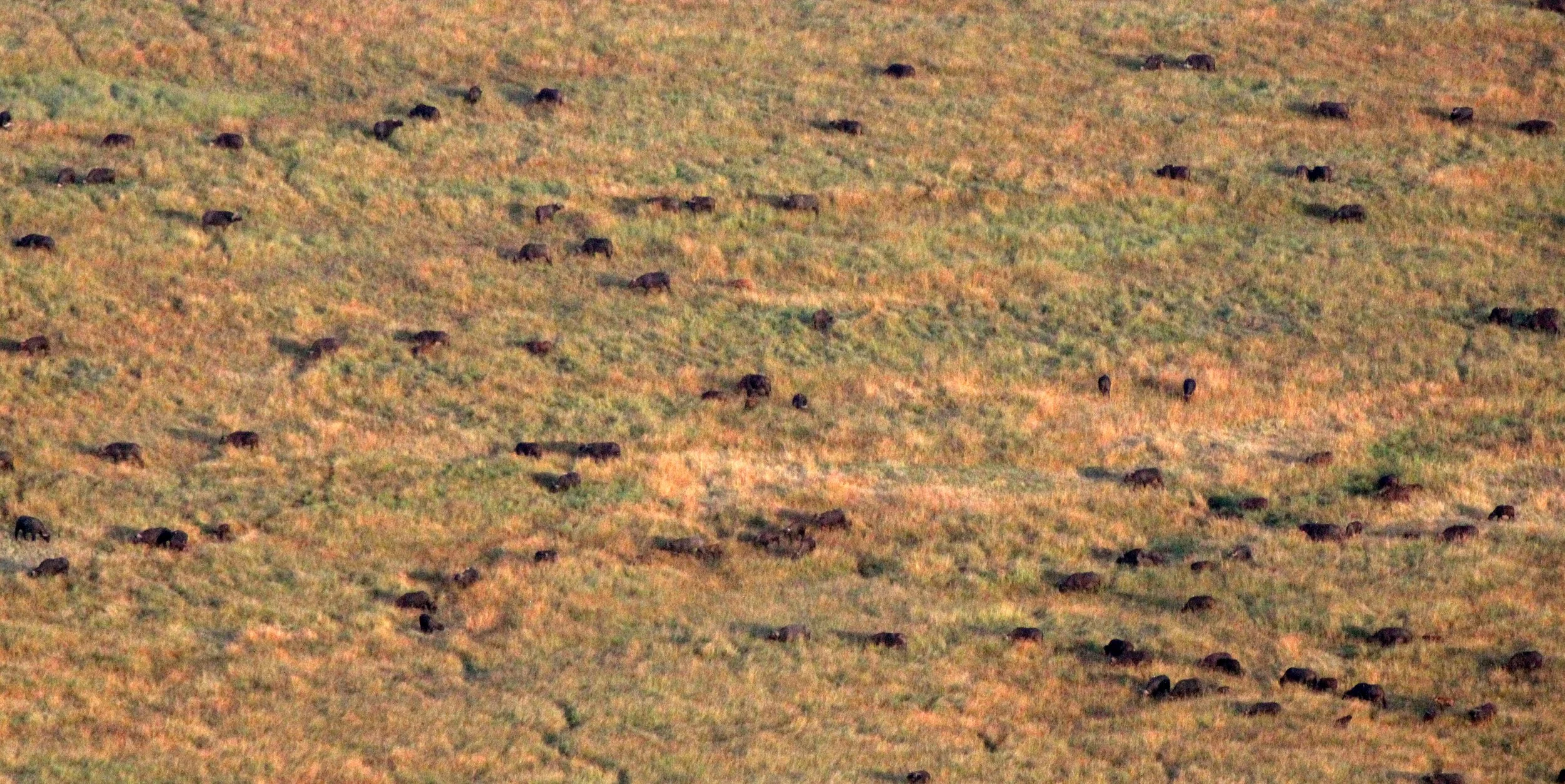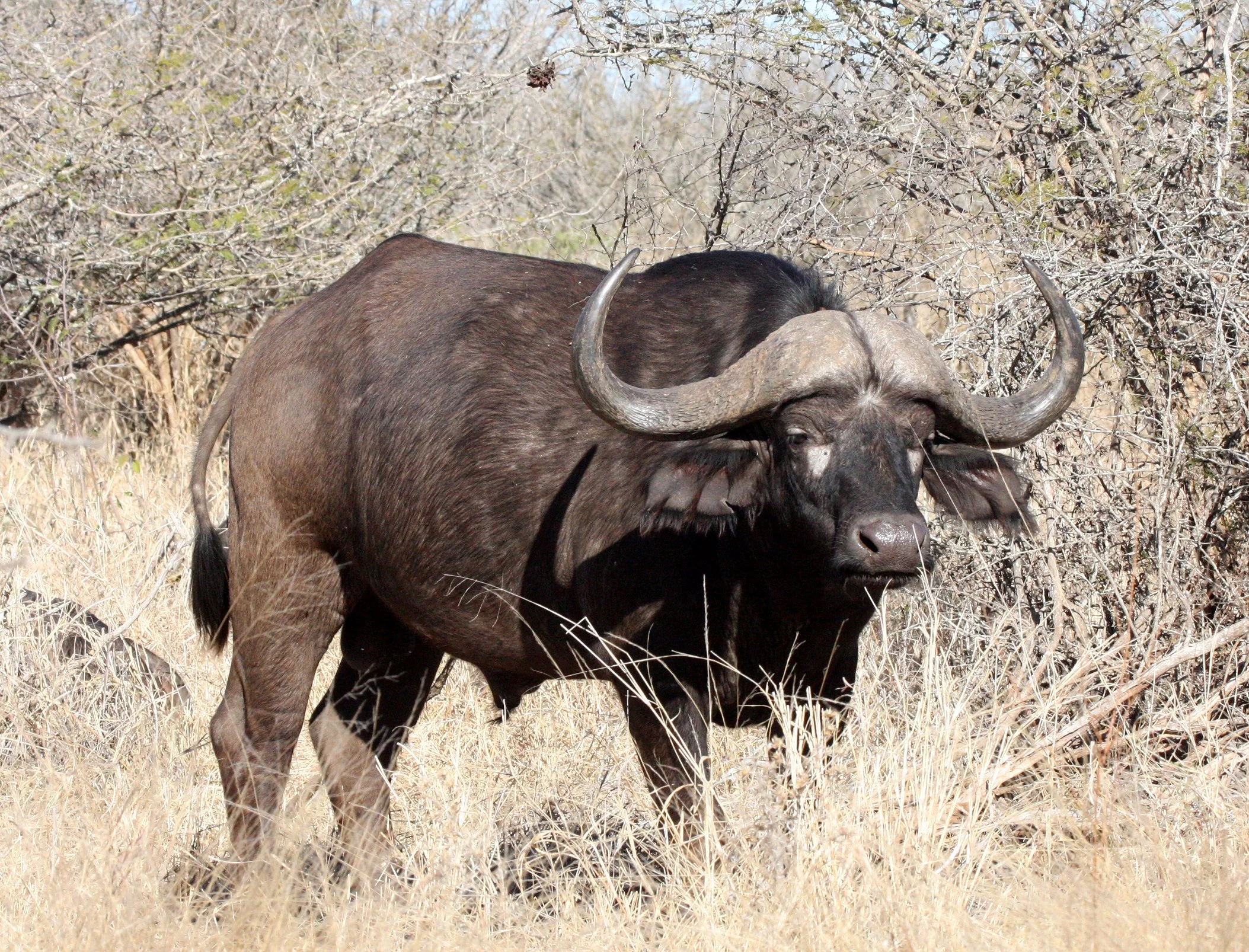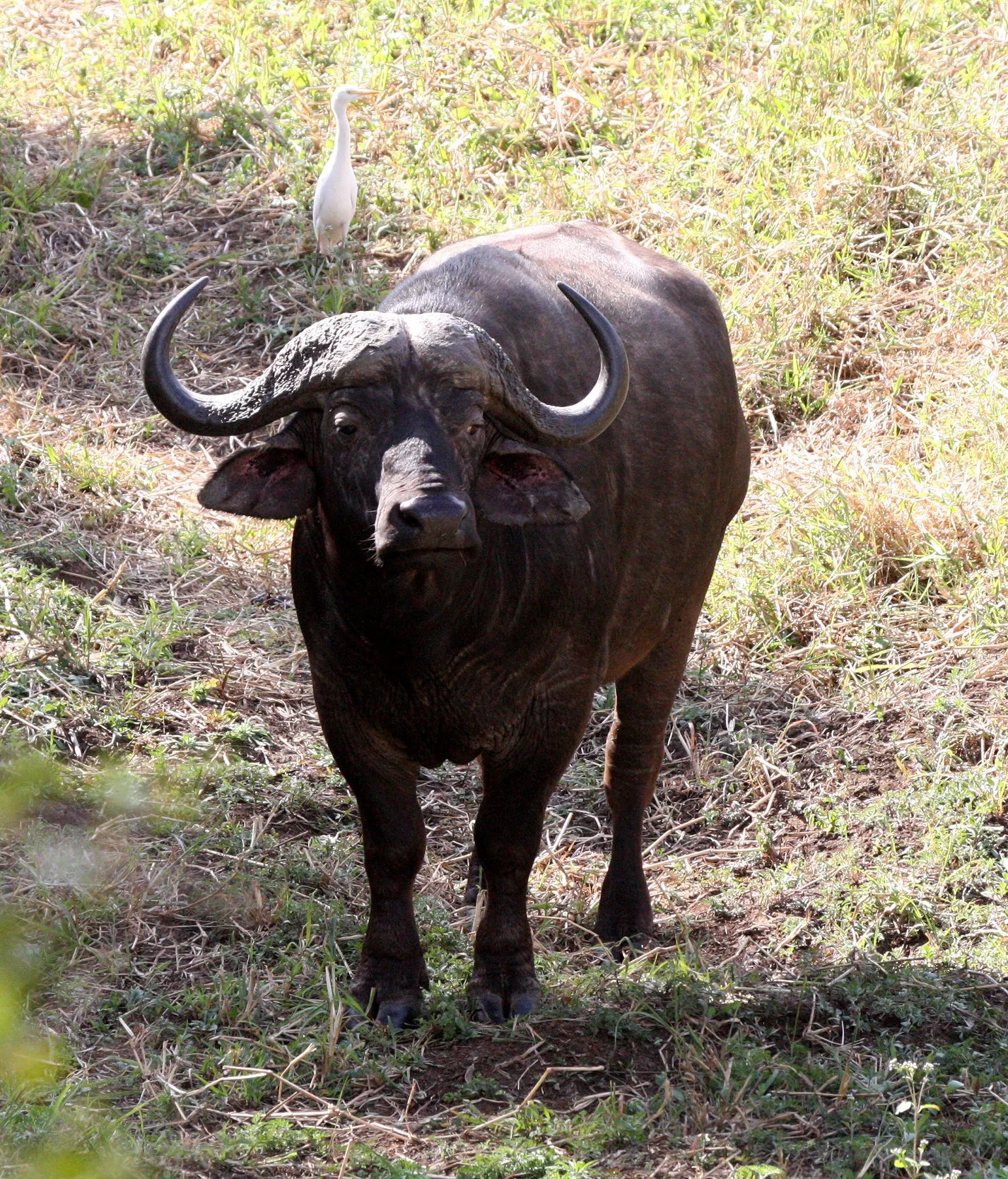
Genus Syncerus, African Buffalo
Cape Buffalo (Syncerus caffer) - seeThe African buffalo (Syncerus caffer) is a large sub-Saharan African bovine. Syncerus caffer caffer, the Cape buffalo, is the typical subspecies, and the largest one, found in Southern and East Africa. S. c. nanus (the forest buffalo) is the smallest subspecies, common in forest areas of Central and West Africa, while S. c. brachyceros is in West Africa and S. c. aequinoctialis is in the savannas of East Africa. The adult African buffalo's horns are its characteristic feature: they have fused bases, forming a continuous bone shield across the top of the head referred to as a "boss". It is widely regarded as one of the most dangerous animals on the African continent, and according to some estimates it gores, tramples, and kills over 200 people every year.
The African buffalo is not an ancestor of domestic cattle and is only distantly related to other larger bovines. Its unpredictable temperament may have been part of the reason that the African buffalo has never been domesticated, unlike its Asian counterpart, the water buffalo. Natural predators of adult African buffaloes include lions, hyenas, and crocodiles. As a member of the big five game, the Cape buffalo is a sought-after trophy in hunting.
Cape Buffalo (Syncerus caffer) - seen in many locations in eastern and southern Africa


































































West African Savanna Buffalo (Syncerus brachyceros) - Uganda Queen Elizabeth National Park































































The African forest buffalo (Syncerus caffer nanus), also known as the dwarf buffalo or the Congo buffalo, is the smallest subspecies of the African buffalo. It is related to the Cape buffalo (Syncerus caffer caffer), the Sudan buffalo (Syncerus caffer brachyceros), and the Nile buffalo (Syncerus caffer aequinoctialis). However, it is the only subspecies that occurs mainly in the rainforests of central and western Africa with an annual rainfall around 1,500 mm. It has been proposed to represent a distinct species, Syncerus nanus.
African forest buffalo live in the rainforests of West and Central Africa; however, their home ranges typically consist of a combination of marshes, grassy savannas and the wet African rainforests. Savannas are the area where the buffalo graze, while the marshes serve as wallows and help the animals handle insects. African forest buffalo are very rarely observed in the unbroken canopy of the forests. They instead spend most of their time in clearings, grazing on grasses and sedges. Consequently, their diet is primarily made up of grasses and other plants that grow in clearings and savannas.
The mixture of habitats is essential for the African forest buffalo. Expansion and encroachment of the rainforest on the surrounding savannas and openings are major difficulties of maintaining the ecosystem. African forest buffalo enjoy old logging roads and tracks, where the forest is thinner and grass and other foods can grow. In these areas, African forest buffalo depend on the grass that is able to develop as a result of the areas that have been previously clear-cut. In some areas park management staff burn off the savannas on a regular basis to keep the rainforest from growing onto the savannas and changing the ecosystem of the area.
Large home ranges can be associated with less-productive habitats; however, a larger area of open grassland has been observed to have a positive relationship with herd size. Home ranges remain remarkably constant and stable year after year. The only documentation of the actual home range boundaries of these animals is relatively recent, so only time will tell how these boundaries remain over large lengths of time; however, studies have shown almost no movement in range boundaries from one year to the next.
Although the area included in a home range is relatively constant over time, the preferences in regard to what part of the range is most used shift with the seasons. From March until August, African forest buffalo spend most of their time in the forest, while from September through February, they favor the savannas and marshes.
African forest buffalo arrange themselves into herds, which help in defense against predators; however, they are not immune to assault. Among predators, the African leopard is the most common, but is generally only a threat to young buffaloes and will feast on them only when they have the opportunity. The Nile crocodile is the only predator which is capable of killing an adult buffalo.
Current literature considers Forest Buffalo to be a legitimate species, hence I am listing it as such in this page.
Forest Buffalo (Syncerus nanus) - Dzanga Bai, Central African Republic













































































































